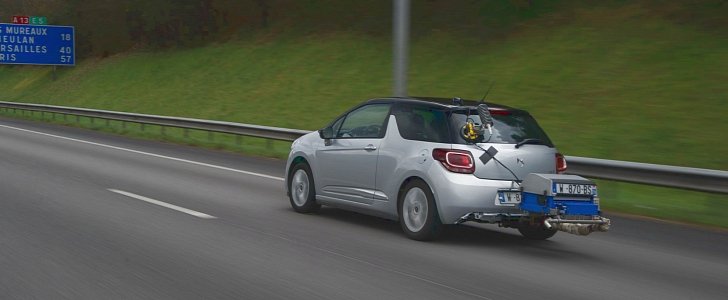Groupe PSA, the French corporation that owns Peugeot, Citroen, and DS, has offered new fuel economy values for over 1,000 versions of its products.
If you are wondering how the French corporation ended up having over 1,000 versions of its automobiles, they have counted the various body types, trim level, and tire dimensions.
The 1,000 values have been estimated after performing real-life measurements on 58 models. The estimations for each particular model were done with the same engine and gearbox, to help set a baseline for the other changes.
PSA Peugeot-Citroen decided that these measurements would gain more credibility if a third party did them, so they asked the Bureau Veritas, a certification organization, to monitor and vouch for the integrity and accuracy of the results.
The tests themselves were done on public roads, and after following the protocol that was established by the French Transport and Environment organization.
Instead of only making a large .pdf or a huge list on a hidden part of their website, the fellows at Peugeot and Citroen have delivered the information in an accessible form thanks to its local web pages, which feature an application to help each customer find out the real-world fuel economy of a particular model.
That application is currently available in six countries, but it will be progressively available in the rest of Europe. The first clients to get access to the data are from Germany, France, United Kingdom, Switzerland, Spain, and Italy.
Evidently, if you live outside of these countries, you can get a result, but you must keep in mind that options can vary from a market to another, so “your mileage may vary.” The French conglomerate, which recently announced it will acquire Opel and Vauxhall from General Motors, has employed the test that will become a norm in the automotive industry.
Called the European RDE, for Real Driving Emissions, it involves using a portable emissions measurement system that is installed on the vehicle.
That system is then carried on the car for 23 kilometers (14 miles) on urban roads, 40 kilometers (24.8 miles) of open roads, and 30 kilometers (18.5 miles) of motorways.
The vehicle itself is operated with the air conditioning system activated, dummies to simulate passengers, and even simulated luggage (ballast). There’s no way you could employ a “defeat device” for it, but we have no doubt somebody might try regardless. Place your bets.
The 1,000 values have been estimated after performing real-life measurements on 58 models. The estimations for each particular model were done with the same engine and gearbox, to help set a baseline for the other changes.
PSA Peugeot-Citroen decided that these measurements would gain more credibility if a third party did them, so they asked the Bureau Veritas, a certification organization, to monitor and vouch for the integrity and accuracy of the results.
The tests themselves were done on public roads, and after following the protocol that was established by the French Transport and Environment organization.
Instead of only making a large .pdf or a huge list on a hidden part of their website, the fellows at Peugeot and Citroen have delivered the information in an accessible form thanks to its local web pages, which feature an application to help each customer find out the real-world fuel economy of a particular model.
That application is currently available in six countries, but it will be progressively available in the rest of Europe. The first clients to get access to the data are from Germany, France, United Kingdom, Switzerland, Spain, and Italy.
Evidently, if you live outside of these countries, you can get a result, but you must keep in mind that options can vary from a market to another, so “your mileage may vary.” The French conglomerate, which recently announced it will acquire Opel and Vauxhall from General Motors, has employed the test that will become a norm in the automotive industry.
Called the European RDE, for Real Driving Emissions, it involves using a portable emissions measurement system that is installed on the vehicle.
That system is then carried on the car for 23 kilometers (14 miles) on urban roads, 40 kilometers (24.8 miles) of open roads, and 30 kilometers (18.5 miles) of motorways.
The vehicle itself is operated with the air conditioning system activated, dummies to simulate passengers, and even simulated luggage (ballast). There’s no way you could employ a “defeat device” for it, but we have no doubt somebody might try regardless. Place your bets.

